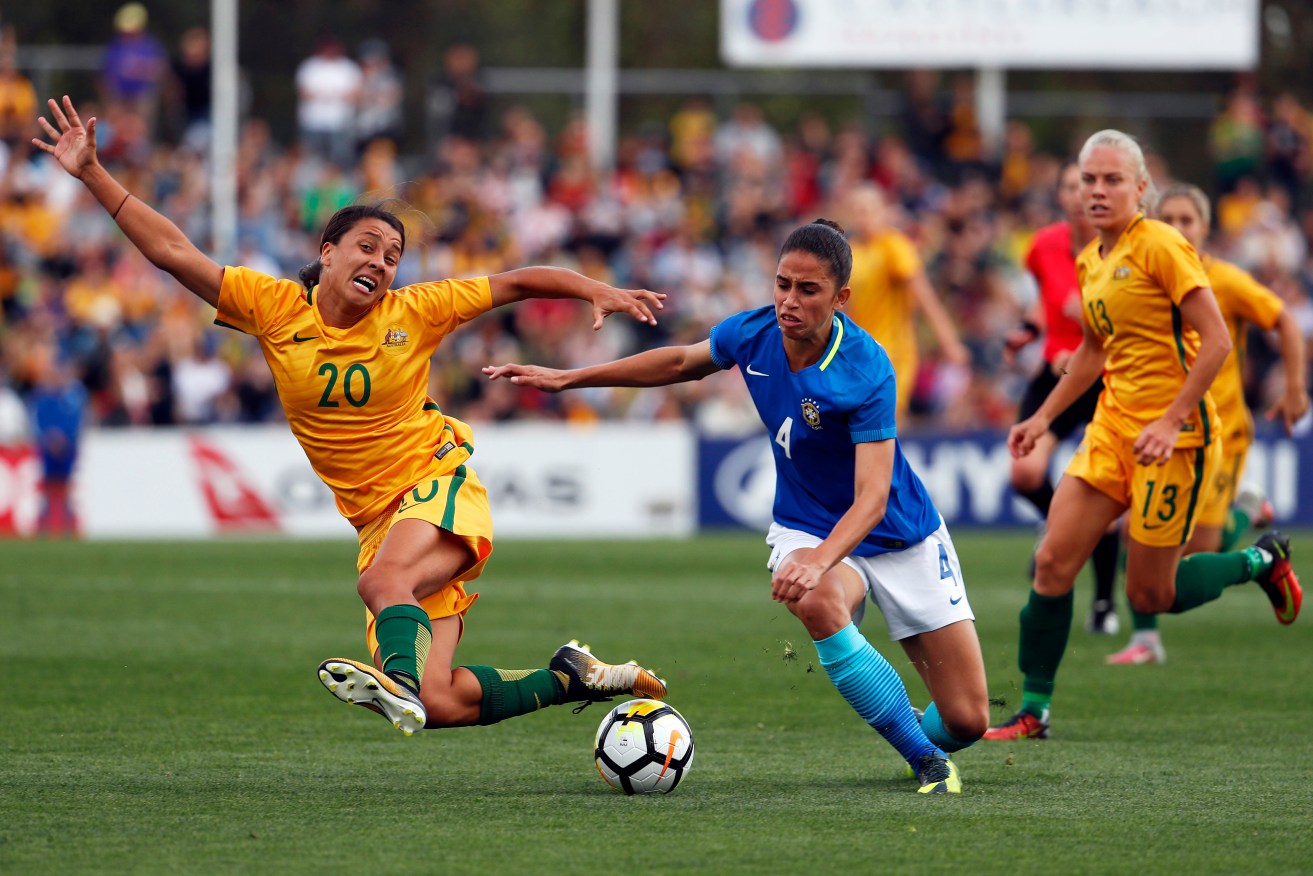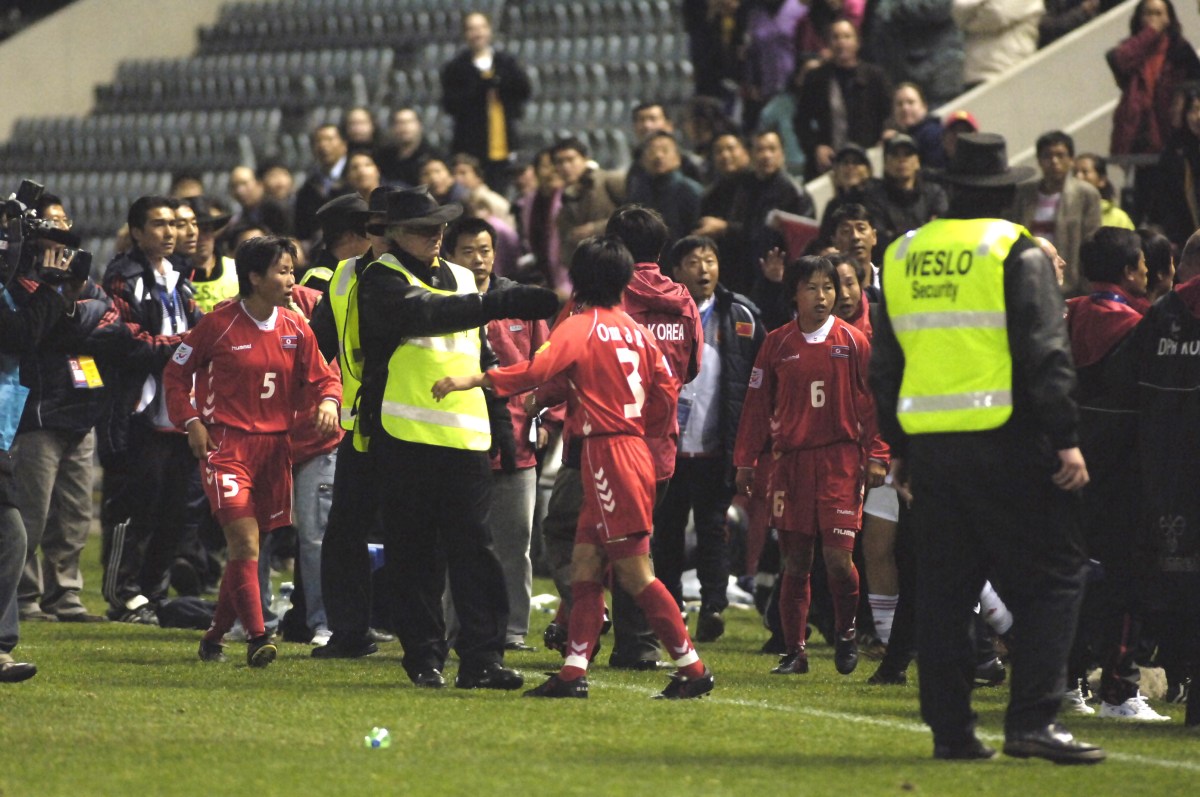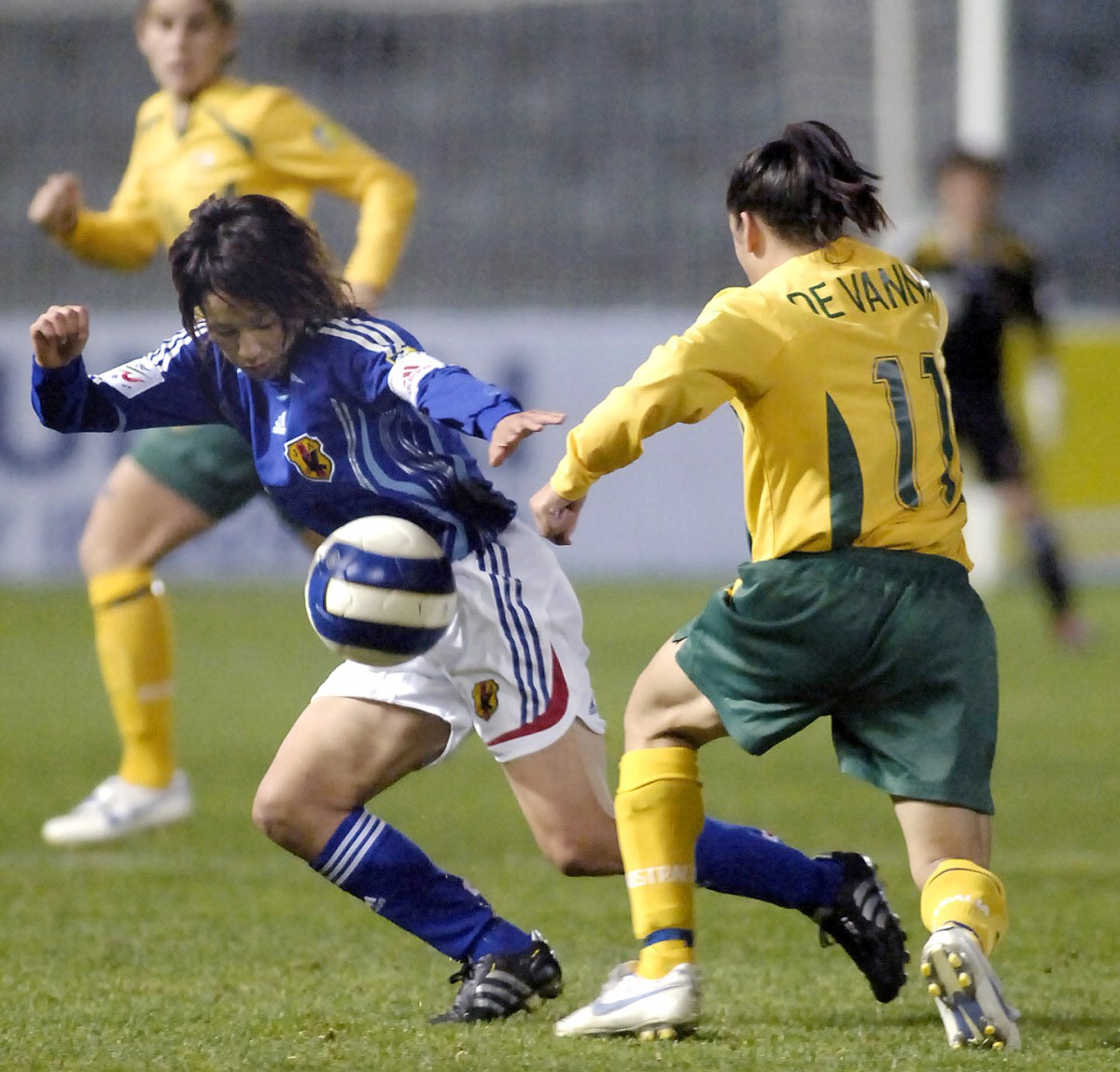White hot Matildas and the forgotten fracas of 2006
Memories of the mostly forgotten 2006 Women’s Asian Cup played largely in Adelaide demonstrate how far the women’s game has come in Australia, writes Paul Marcuccitti.

Sam Kerr (left) is part of a powerful new generation of Matildas. Photo: AP/Daniel Munoz
In the weeks after the FIFA World Cup ended in July 2006, I attended several matches in the Women’s Asian Cup.
I don’t point this out to show how dedicated I am – it was easy. The 2006 edition of the Women’s Asian Cup was one of Manton Street’s many tales. All but two of the tournament’s games were played at Hindmarsh.
It doesn’t get talked about a lot. The Matildas’ standing in the sporting landscape was nothing like it is now. I haven’t checked copies of The Advertiser from back then but I’d be surprised if it gave the tournament – played in Adelaide – more column inches than it’s giving the current Women’s Asian Cup which is being played in Jordan.
Several things that occurred in that fortnight that would attract attention now went largely unnoticed then.
On arriving for the first day of matches, I immediately bumped into a then Football Federation Australia official who I knew. He handed me the tournament’s official program which had a missing page. Apparently, the North Koreans objected to its content and, consequently, this offending page had to be physically ripped out of every single copy. The explanation I was given made it sound like the missing 18 ½ minutes of the Watergate tapes couldn’t have been as intriguing.
But Australians could have been forgiven then for not understanding some of the region’s politics. FFA had only been formally admitted to the Asian Football Confederation on January 1 of that year. The tournament was originally going to be played in Japan with eight teams; the Matildas’ late entry made it a nine-country affair and it was moved to Adelaide.
Attendances were, by any standard, poor. Australia’s opening match against South Korea attracted just 1350 spectators. And, while it was the middle of winter, it was a glorious sunny day. The final – which featured the Matildas – saw a crowd of 5000. More than three times that number attended their friendly against Brazil in Newcastle last September.
The arrival of the then president of the Asian Football Confederation, Mohamed bin Hammam, was also met with little fanfare. Two days before the tournament’s final, he featured at a media conference at the Hyatt Regency Adelaide – as it was then called – in which the main item was the aftermath of the semi-final between China and North Korea (more on that later).
During that media conference, with the nation still enjoying the afterglow of the 2006 FIFA World Cup, bin Hammam was inevitably asked about Australia’s chance of hosting the tournament. He replied by asking why it couldn’t be held in his country, Qatar. I’m certain that nobody recorded that – everyone thought he was kidding.
We would read a lot more about bin Hammam in ensuing years. In 2011, FIFA’s ethics committee suspended him because of allegations he had bribed 25 Caribbean Football Union members with US$1 million .. delivered in unmarked envelopes which each had $40,000. He received a lifetime ban from the game in December of the following year.
On the field, the Matildas impressed with three wins and a draw from the group stage. Their team included a lightning-quick forward named Lisa De Vanna. The brilliant but sometimes erratic young Western Australian had her own little cheer squad at Hindmarsh. There were no locals in the team but De Vanna had played for the defunct Adelaide Sensation in the (also defunct) Women’s National Soccer League.
The Matildas, and other nations, had plenty of stars but the profile of the women’s game was simply too low for anyone but hard-core fans to notice. Homare Sawa, already an experienced international, was playing: five years later she would lift the Women’s World Cup as Japan’s captain and receive the Golden Ball for being the tournament’s best player.
The one thing that did attract media interest that fortnight was, not surprisingly, a fracas. Back then a game between China and North Korea was the region’s heavyweight clash. North Korea had been victorious in the tournament’s two previous editions, recording wins over China both times. Before that, however, the Chinese had dominated, winning seven straight Cups.
It was a pulsating match – one of the best I’ve seen at any level. China led 1-0 deep into stoppage time, however, with about six extra minutes played, the North Koreans finally found the back of the net from a penalty box scramble. But while they were celebrating, they hadn’t noticed that the assistant referee had flagged for offside.
They protested the decision both before play was restarted and after the final whistle was blown a few minutes later.
And how.
The North Korean goalkeeper pushed the referee and was red carded. Other players chased the ref and her assistants and threw bottles of water at them. And that was despite police racing on to the pitch to escort the officials to the tunnel.

North Korean players protest with the referees during their loss to China in the 2006 Asian Cup played in Adelaide. Photo: AP/David Mariuz
Some Chinese fans, just above the players’ tunnel, got in on the act and threw bottles at the North Koreans, whose bench and coaching staff were also getting involved, and the players then started throwing them back at those supporters. There were at least a couple of minutes of anarchy.
Fortunately, the drama in the final was confined to the match itself. But one of the things I remember from that game was how much less tactical astuteness there was in women’s soccer at that level then.
Australia raced to a 2-0 lead in the first half and that was the score until midway through the second half. But I could see the Chinese were almost certainly going to reply well before they finally did in the 68th minute. The Matildas were struggling to absorb the increasing pressure and, when their coach, Tom Sermanni, went to his bench (two minutes before China’s first goal) to replace outstanding forward Caitlin Munoz, he brought on De Vanna – another attacking player.
Not an illogical change as De Vanna’s pace could boost Australia’s counterattacks but it was increasingly evident that the team could have instead used a substitute more accustomed to defensive play. The match would finish level at 2-2 and, after penalty shoot-out success, China regained the trophy.
Sermanni is a top coach. He would lead the Matildas to glory in the 2010 Women’s Asian Cup and he’s currently with Orlando Pride in the National Women’s Soccer League.
But in 2006, he led a team with players who, while undoubtedly talented, were unable to hone their tactical awareness in a proper domestic competition. The Women’s National Soccer League wound up in 2004; the W-League would not begin until 2008.
And, in truth, there was, understandably, less expectation that women’s matches would be intensely tactical battles. There were fewer professionals in the game and there weren’t many top-level nations outside of northern Europe, North America and East Asia.
Had that final against China been played now, fans might be critical of the Matildas for not doing a better job controlling the situation.

A young Lisa De Vanna during the Matildas’ 2006 Asian Cup clash with Japan. Photo: AP/David Mariuz
Which leads us to the current tournament in Jordan. Whereas the fine 2006 team opened the Asian Cup with a 4-0 win over South Korea, on Saturday night, the star-studded 2018 Matildas could do no better than draw 0-0 against the same opponent.
And tactics played a big part with the Koreans setting themselves up in a way that made it difficult for Australia to create chances. It’s what many fans call “parking the bus” and, as you can imagine, that’s not a term of endearment.
But don’t think it’s easy – setting up that way requires players to be well drilled and incredibly disciplined.
We’re going to have to get used to it in women’s soccer too. At the 2016 Olympics, the Swedes managed to win the silver medal despite scoring just four times in six matches. In a quarter-final against the always-powerful United States, their defensive tactics helped them to a 1-1 draw and they won the subsequent penalty shoot-out.
American goalkeeper Hope Solo called the Swedes “a bunch of cowards” (for their approach to the game). There’s no need to mention how Pia Sundhage (Sweden’s coach) replied but it’s fun so I will anyway: “I don’t give a crap. I’m going to Rio, she’s going home.”
For the Matildas, facing these tactics presents a new challenge. They’ve performed well in international tournaments for some time but the current team is white hot. Since the beginning of 2016, its record is 18 wins, seven draws and just four losses.
There have been some big victims in that run too. Three of those wins were over Brazil, another three were over China, two over Japan, one over the Netherlands (just months before the Dutch would sweep to victory in the European Women’s Championship) and one over the mighty USWNT.
So they can expect a lot more opponents to do as South Korea did – prioritise blocking Australia’s routes to goal.
In recent years the Matildas, under coach Alen Stajcic, have shown that they’re tactically aware. But another test of their astuteness stands between them and more glory.
Paul Marcuccitti is InDaily’s soccer columnist.




